What Colors Can Cats See? Unveiling The Mystery Of Feline Vision
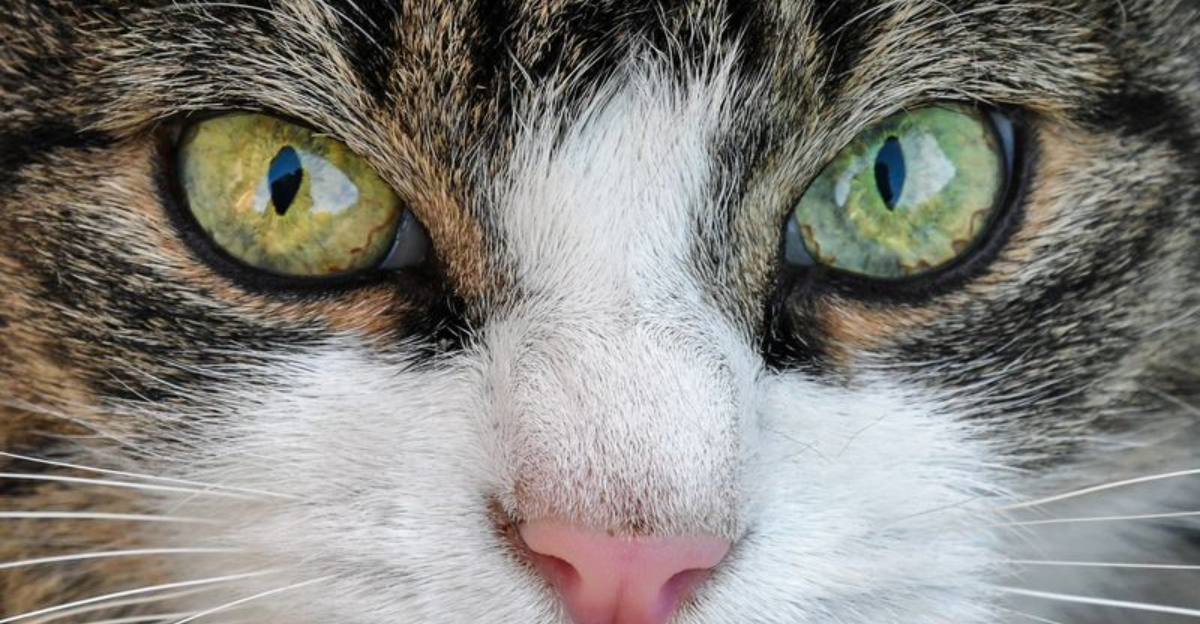
Did you know cats don’t see the world quite like humans do?
With their unique vision capabilities, these whiskered wonders perceive their environment in shades and hues that are both fascinating and mystifying.
Let’s explore 12 intriguing insights into how cats see the world differently from us.
1. How Do Cats See The World? A Look At Feline Vision
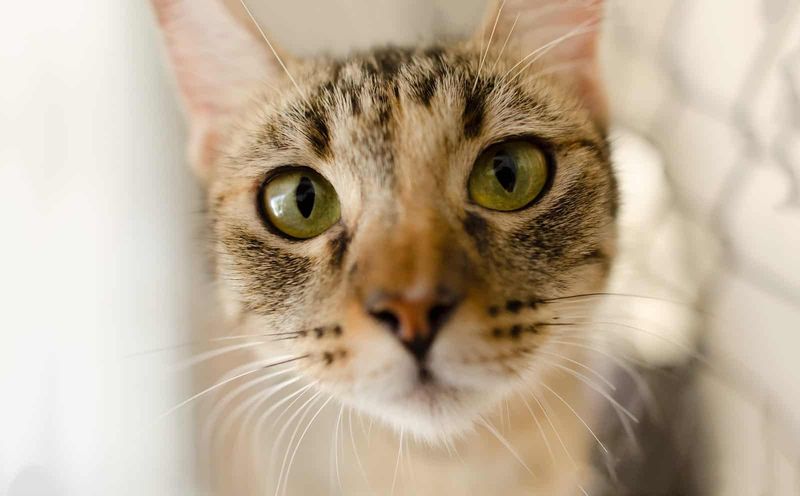
Imagine seeing the world through a cat’s eyes – things look a bit different!
Cats have a wider field of view than humans, and their vision is more attuned to detecting motion. They see well in low light, but details and sharpness aren’t their strong suit.
Cats are near-sighted compared to us. While humans can focus on faraway objects, cats prefer their close-up view. This makes them great at spotting little critters scurrying by.
Their world might not be as colorful as ours, but their ability to see in dim lighting makes them exceptional nighttime explorers.
2. The Science Behind What Cats Can And Can’t See
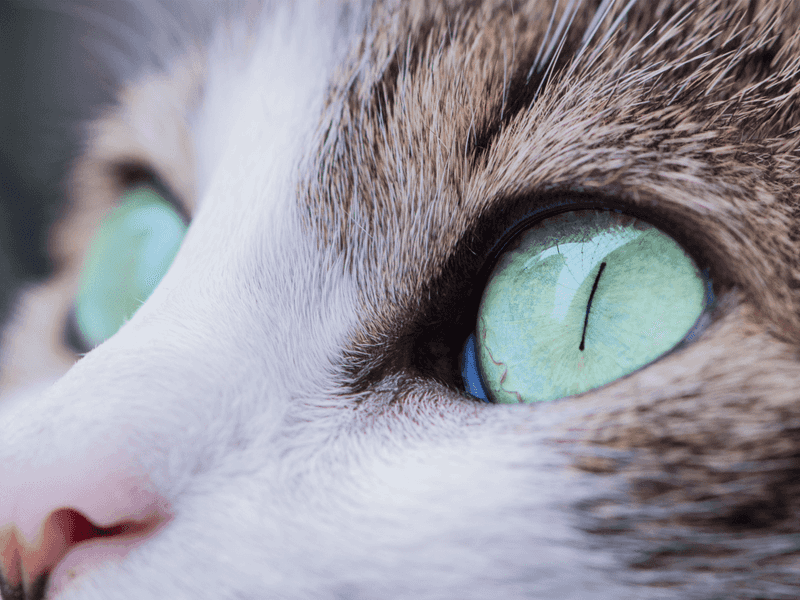
Cats’ eyes are built like tiny marvels of biological engineering. Their retinas are packed with rod cells, which excel in low-light conditions but don’t help much with color perception.
While humans have more cone cells to detect a range of colors, cats have fewer, limiting their color spectrum. They primarily see shades of blue and green.
Though they might miss the vibrant reds and oranges, this trade-off gives them those legendary night vision capabilities. It’s a fascinating compromise that allows them to be the nocturnal hunters they naturally are.
3. How Cats’ Eyes Differ From Ours In Color Perception
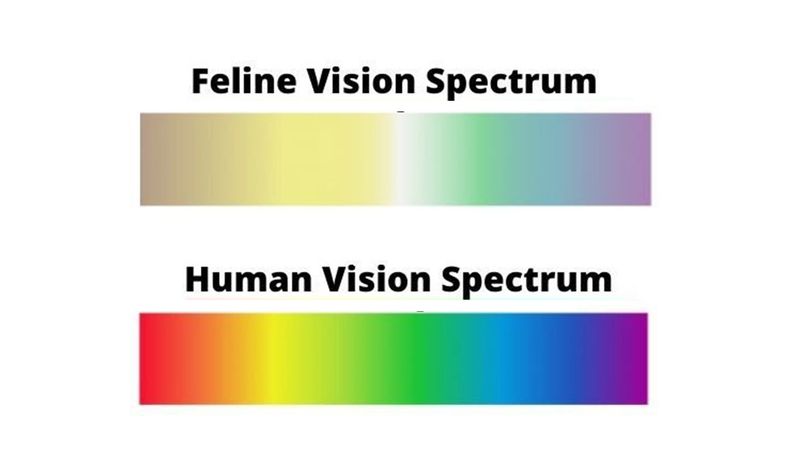
Ever wonder why your cat doesn’t seem as excited about your bright red sweater? Cats perceive colors differently, mostly seeing blues and greens.
Unlike our trichromatic vision, cats are likely dichromatic. This means they’re missing the red-sensitive cones that humans have, making the world appear more muted.
While they might not appreciate a rainbow’s full spectrum, cats see well in twilight, a skill that suits their crepuscular lifestyle. Their unique visual setup means they’re not missing out – just viewing things from a different palette.
4. The Role Of Light And Darkness In How Cats See
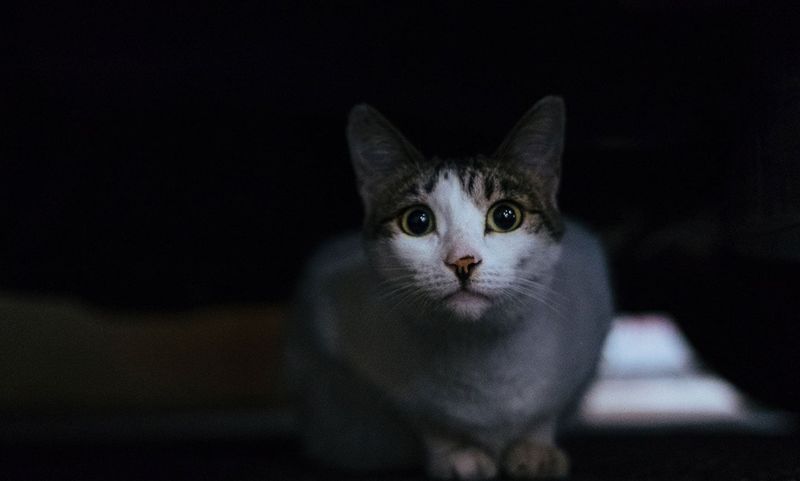
In the twilight hours, cats become masters of their domain. Thanks to a special membrane called the tapetum lucidum, cats’ eyes reflect light. This enhances their ability to see in near darkness.
While they might not be able to navigate in absolute darkness, dim environments are their playground. This reflective layer gives their eyes that eerie glow at night.
It’s not magic – just a clever adaptation that turns them into efficient hunters when the sun dips below the horizon. Their world lights up when ours dims.
5. The Evolution Of Cats’ Vision: Why They See Differently
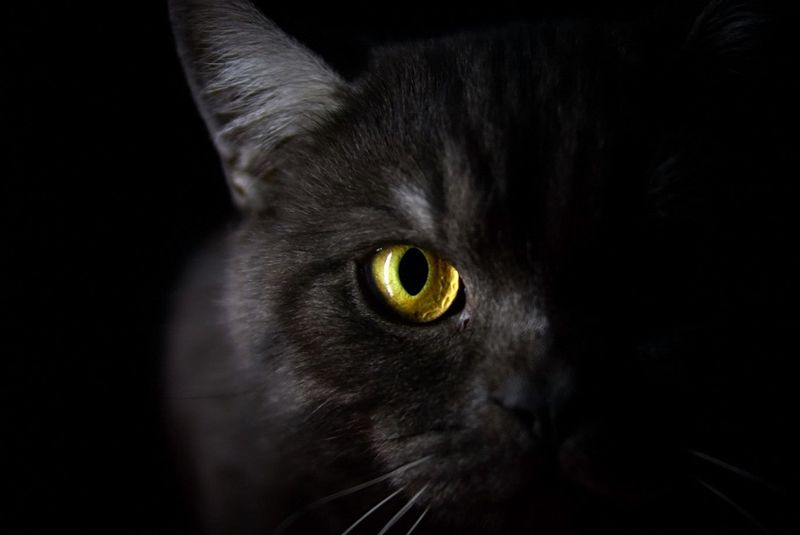
The secret behind a cat’s unique vision lies in its evolutionary past. Wild cats needed to hunt when prey was active, often during dawn and dusk.
This crepuscular hunting required exceptional low-light vision. Over time, their eyes adapted to excel in these conditions, even if it meant sacrificing some color perception.
Today, domestic cats inherit these traits. They’re perfectly equipped to spot a mouse in dim light, even if they’re not sure if it’s red or green. Evolution shaped their sight to fit their lifestyle – a true survival story.
6. How Cats Use Their Vision For Hunting And Navigating
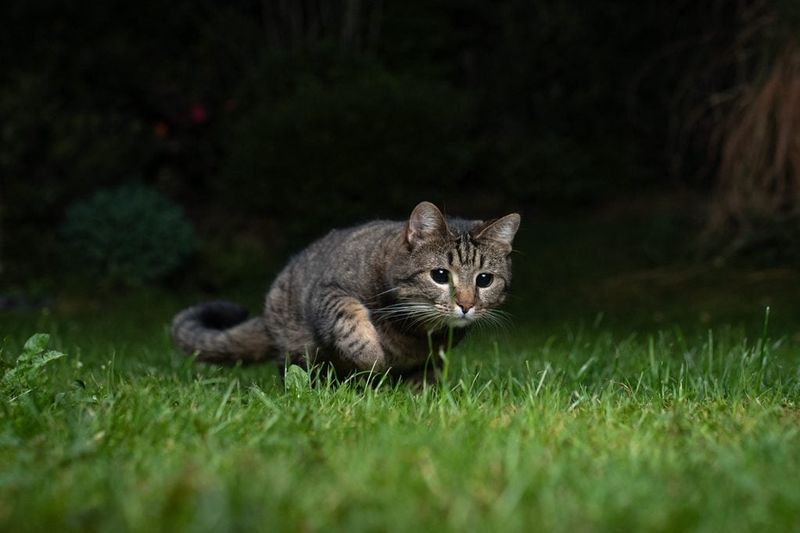
Cats are natural-born hunters, and their eyes play a crucial role in this. Their vision is designed to detect movement, which makes them excellent at tracking prey.
While colors might not pop, sudden motions in a field of green become their focal point. This makes their eyes perfect tools for both hunting and navigating.
Their sharp peripheral vision allows them to spot potential threats or opportunities, even in their periphery. With instincts honed over millennia, cats turn their gaze into a finely-tuned hunting instrument.
7. How Cats Perceive Colors Compared To Humans?

Cats and humans live in the same world but see it through different lenses. Our human eyes can discern a myriad of colors, thanks to three types of cone cells.
Cats, on the other hand, operate mainly with two types, limiting their spectrum. They view the world in blues and greens, lacking the reds and oranges.
While our world is a colorful canvas, theirs is more about contrasts and movements. It’s a simpler tableau, tailored to their needs as hunters and companions.
8. How Cats Perceive Colors Compared To Dogs?
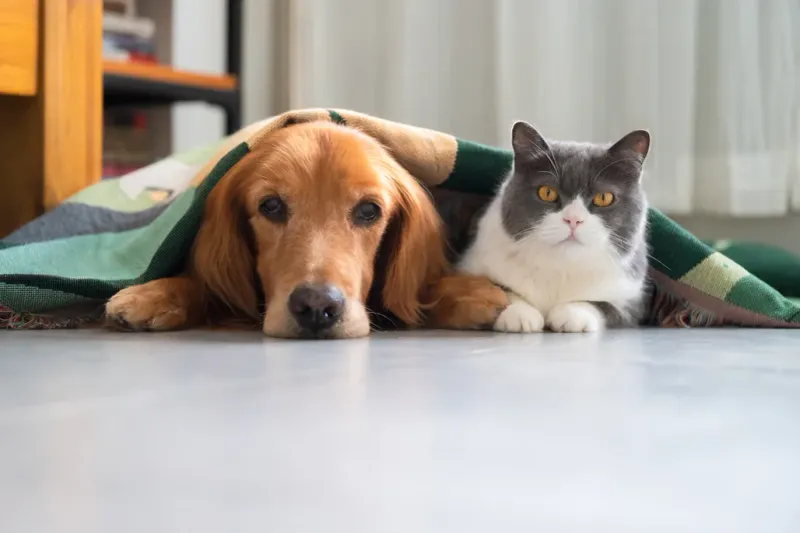
In the animal kingdom, cats and dogs both have unique visions. Cats see better in low light, thanks to their superior night vision.
When it comes to colors, both see a limited palette, with cats focusing more on blues and greens. Dogs might see more distinctions in brightness.
While neither sees the rainbow as vividly as humans, their vision suits their lifestyles well. Cats focus on motion, while dogs might catch the subtleties in shades. It’s a delightful contrast between our furry friends.
9. What Colors Look The Brightest to Cats?

For cats, the world is painted in shades of blue and green. These colors appear more vivid and engaging to them compared to the reds and oranges we see.
In a garden, they’ll be more attracted to the green of leaves than the red of roses. Blues and greens stand out, making their surroundings lively in a unique way.
Their perception is not less, just different. It’s as if their universe is curated with a soothing blue-green filter, bringing out the vibrancy in their way.
10. Why Cats Don’t See Red: The Limits Of Their Color Spectrum
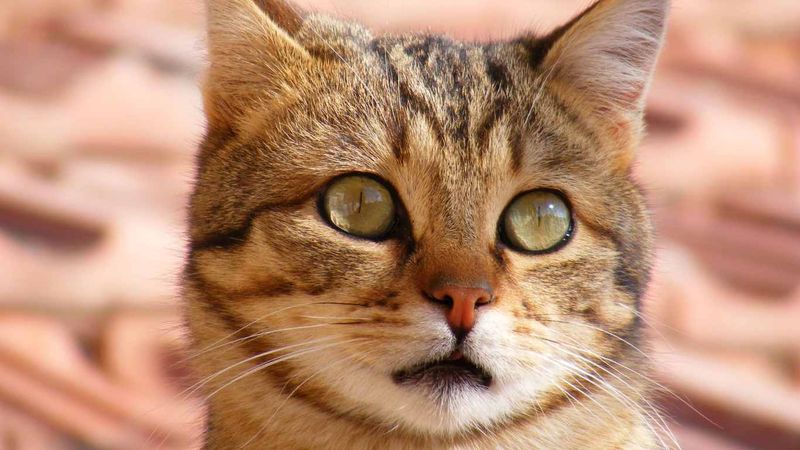
The color red is a mystery to cats. Their eyes are not equipped with red-sensitive cone cells, making this vibrant hue appear muted or even invisible.
This might sound like a limitation, but it fits their needs perfectly. Their vision is optimized for detecting prey rather than picking out colorful flowers.
The absence of red in their spectrum is a small price for their keen motion detection and low-light prowess. It’s a world designed for function over flair, and cats navigate it with natural grace.
11. The Myth Of Cats Seeing Only In Black And White
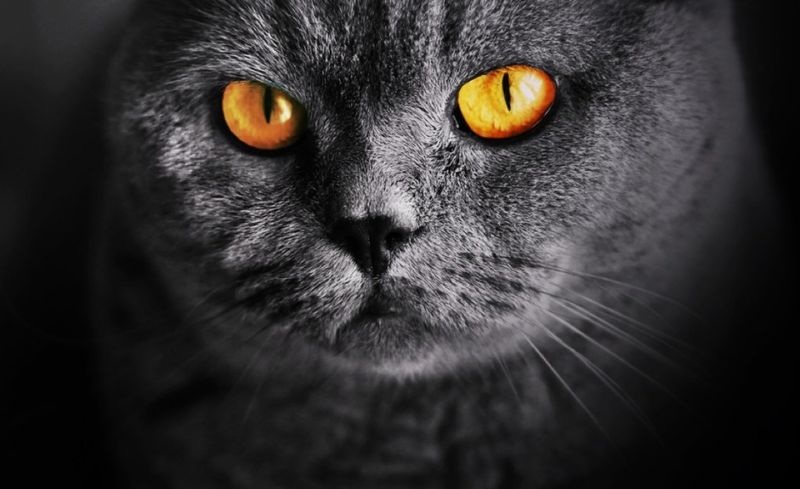
The idea that cats see the world in black and white is a myth. While their color vision is limited, they can perceive shades of blue and green.
Unlike the grayscale view once believed, their vision provides a dynamic, albeit limited, palette. They see more than just shadows and light.
It’s a myth debunked by science – cats enjoy a more colorful world than we once thought. Their view is unique, playing to their strengths, and far from the monochrome misconception.
12. How A Cat’s Eyesight Helps Them Avoid Danger
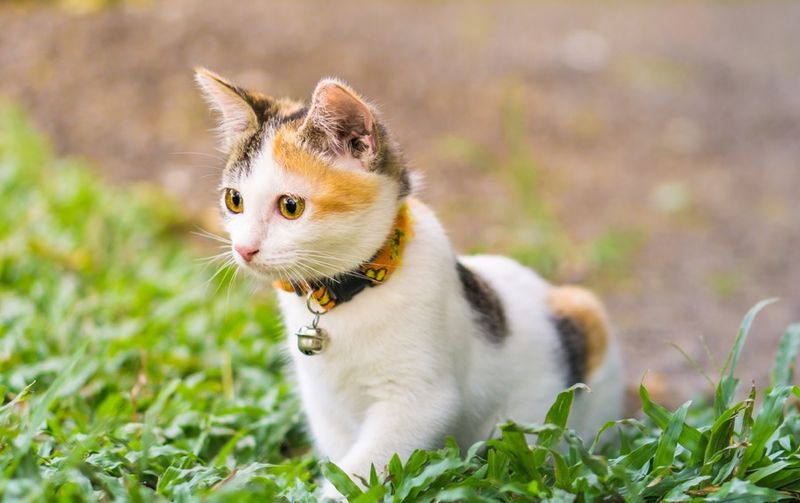
Cats’ eyes are not just tools for hunting but also for survival. Their wide field of view and motion detection help them spot potential dangers.
Bright colors may not attract them, but the slightest movement can alert their senses. Their sight is an in-built radar for threats lurking around.
From dodging threats to climbing to safety, their vision is a key component in their survival toolkit. It’s a blend of instincts and biology that keeps them one step ahead, always ready for the next move.






